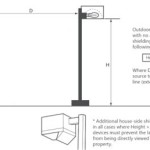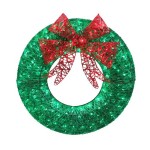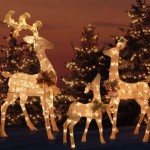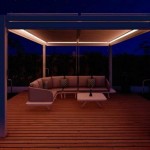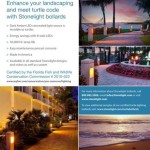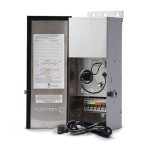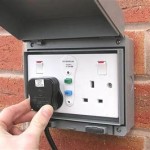Outdoor Wood Fence Lighting Ideas For Homes
Outdoor wood fences offer security, privacy, and aesthetic appeal to residential properties. Incorporating lighting into the fence design not only enhances its visual charm but also increases safety and security during nighttime hours. The selection of appropriate lighting fixtures and their strategic placement are crucial for achieving the desired ambiance and functionality. Several factors influence the choice of lighting, including the style of the fence, the homeowner's preferences, the surrounding landscape, and local regulations.
The integration of lighting can transform a simple wooden fence into a captivating feature of the outdoor living space. From subtle ambient glow to targeted task lighting, the possibilities are vast. This article explores various outdoor wood fence lighting ideas to help homeowners create a welcoming and safe environment around their property.
Types of Outdoor Wood Fence Lighting
A diverse range of lighting options exists for illuminating wooden fences. Understanding the characteristics of each type is essential for making informed decisions about which to incorporate into the design. The selection should consider factors such as energy efficiency, light output, durability, and aesthetic compatibility with the fence and surrounding environment.
String Lights: String lights, also known as fairy lights or bistro lights, are a popular choice for creating a festive and inviting atmosphere. They consist of a series of small bulbs strung along a wire, which can be easily draped or wrapped around fence posts and rails. String lights are available in various colors, shapes, and bulb types, including incandescent, LED, and solar-powered options. LED string lights are particularly energy-efficient and long-lasting.
The flexibility of string lights allows for creativity in their application. They can be hung in a swagging pattern between posts, wrapped tightly around fence rails for a more subtle effect, or used to highlight specific areas, such as a gate or garden feature. String lights are relatively inexpensive and easy to install, making them an accessible option for many homeowners.
Post Cap Lights: Post cap lights are designed to replace the existing caps on fence posts, providing a seamless and integrated lighting solution. These lights typically feature a built-in LED light source that emits a soft, downward glow. Post cap lights are available in a variety of materials, including metal, plastic, and composite, and can be chosen to complement the style of the fence.
The advantages of post cap lights include their ease of installation, low profile, and ability to provide consistent illumination along the fence line. They are often solar-powered, eliminating the need for wiring and reducing energy consumption. Post cap lights are a practical choice for homeowners seeking a subtle and elegant lighting solution.
Spotlights: Spotlights are directional lights that can be used to highlight specific features, such as trees, shrubs, or architectural details. They are typically mounted on the ground or on the fence itself and can be adjusted to direct the light beam where it is needed. Spotlights are available in various sizes and wattages, allowing for customization of the light output.
Strategic placement of spotlights can dramatically enhance the aesthetics of the landscape. For example, a spotlight can be used to illuminate a specimen tree, creating a focal point in the yard. Spotlights can also be used to highlight the texture and grain of the wooden fence, adding depth and visual interest. They are a valuable tool for creating dramatic lighting effects.
Path Lights: Path lights are designed to illuminate walkways and garden paths, providing safety and guidance during nighttime hours. They are typically low-to-the-ground fixtures that emit a soft, downward glow. Path lights can be installed along the base of the fence, providing a continuous line of illumination that defines the perimeter of the property.
Path lights are available in a variety of styles, from traditional to contemporary, and can be chosen to complement the overall design of the landscape. They are often solar-powered or low-voltage, making them energy-efficient and easy to install. Path lights are an essential element of landscape lighting, enhancing both safety and aesthetics.
Deck Lights: Deck lights are small, recessed lights that can be installed on the fence posts or rails, providing subtle illumination. They are typically LED lights that are energy-efficient and long-lasting. Deck lights are designed to be weather-resistant and can withstand the elements.
Deck lights offer a sleek and modern aesthetic, providing a subtle glow that enhances the beauty of the wood. They can be spaced evenly along the fence line or clustered in specific areas to create different lighting effects. Deck lights are a versatile option for homeowners seeking a minimalist and contemporary lighting solution.
Flood Lights: Flood lights are high-intensity lights that are used to illuminate large areas. They are typically used for security purposes or to highlight specific features, such as a driveway or parking area. Flood lights are available in various wattages and beam angles, allowing for customization of the light output and coverage area.
While flood lights can provide excellent security, it's crucial to consider the potential for light pollution and glare. Position flood lights carefully to avoid shining directly into neighbors' windows or creating excessive brightness that detracts from the ambiance of the outdoor space. Motion-activated flood lights are a good option for deterring intruders while minimizing energy consumption.
Planning Your Wood Fence Lighting Design
A successful wood fence lighting design requires careful planning and consideration of several factors. Before purchasing any lighting fixtures, it is essential to assess the specific needs and goals of the project. This includes determining the desired level of illumination, the areas to be highlighted, and the overall aesthetic to be achieved.
Assess Your Needs: The first step in planning a wood fence lighting design is to assess the specific needs and goals of the project. Consider the primary purpose of the lighting: Is it for security, ambiance, or both? Identify the areas that need to be illuminated, such as walkways, garden beds, or specific features of the fence itself. Determine the desired level of illumination and the overall aesthetic to be achieved.
Security lighting typically requires brighter and more focused light than ambient lighting. Ambient lighting, on the other hand, aims to create a warm and inviting atmosphere. Understanding these different needs is crucial for selecting the appropriate lighting fixtures and their placement.
Consider Your Fence Style: The style of the fence should influence the choice of lighting fixtures. A traditional picket fence may benefit from classic post cap lights or string lights, while a modern fence may be better suited to sleek deck lights or spotlights. The lighting should complement the design and architecture of the fence, enhancing its overall aesthetic.
Consider the color and material of the fence when selecting lighting fixtures. Darker fences may require brighter lights to achieve the desired level of illumination, while lighter fences may benefit from softer, more subtle lighting. The material of the lighting fixtures should also be compatible with the wood of the fence, ensuring a cohesive and harmonious look.
Create a Lighting Plan: Before purchasing any lighting fixtures, create a detailed lighting plan. This plan should include a map of the property, indicating the location of the fence and the proposed placement of each lighting fixture. Consider the direction and intensity of the light, as well as the potential for glare or light pollution.
The lighting plan should also take into account the existing landscape and any potential obstructions, such as trees or shrubs. Ensure that the lighting fixtures are positioned to provide adequate illumination without creating unwanted shadows or hotspots. A well-thought-out lighting plan will help to ensure that the final result is both functional and aesthetically pleasing.
Choose Energy-Efficient Options: Energy efficiency is an important consideration when selecting outdoor lighting fixtures. LED lights are significantly more energy-efficient than traditional incandescent or halogen bulbs, and they also have a longer lifespan. Solar-powered lights are another energy-efficient option, as they do not require any electricity to operate.
Consider the long-term cost savings of energy-efficient lighting when making your selection. While LED or solar-powered lights may have a higher initial cost, they will save money on electricity bills over time. They also reduce the environmental impact of your outdoor lighting.
Consider Color Temperature: The color temperature of the light is measured in Kelvin (K) and affects the overall ambiance of the outdoor space. Warmer light (2700K-3000K) has a yellow or orange hue and creates a cozy and inviting atmosphere. Cooler light (4000K-5000K) has a blue or white hue and provides brighter, more focused illumination.
Choose the color temperature that best suits your needs and preferences. Warmer light is often preferred for ambient lighting, while cooler light is better suited for security or task lighting. Mixing different color temperatures can create interesting and dynamic lighting effects, but it should be done carefully to avoid a jarring or unbalanced look.
Installation and Maintenance
Proper installation and maintenance are essential for ensuring the longevity and performance of outdoor wood fence lighting. Incorrect installation can not only reduce the lifespan of the lighting fixtures but also pose safety hazards. Regular maintenance, such as cleaning and replacing bulbs, will help to keep the lighting looking its best and functioning properly.
Wiring and Electrical Safety: If the lighting fixtures require wiring, it is essential to follow all electrical safety codes and guidelines. If you are not comfortable working with electricity, it is recommended to hire a qualified electrician to perform the installation. Improper wiring can lead to electrical shock, fire hazards, and damage to the lighting fixtures.
Ensure that all wiring is properly insulated and protected from the elements. Use weatherproof connectors and junction boxes to prevent water damage. If you are using low-voltage lighting, you will need to install a transformer to convert the standard household voltage to the appropriate voltage for the lights.
Proper Mounting Techniques: The lighting fixtures should be securely mounted to the fence using appropriate hardware. Use screws or bolts that are long enough to penetrate the wood and provide a strong hold. Avoid using nails, as they can easily pull out over time. Ensure that the mounting hardware is made of weather-resistant materials to prevent corrosion.
When mounting lights on fence posts, consider the weight of the fixtures and the stability of the posts. If necessary, reinforce the posts with additional supports to prevent them from leaning or falling over. Position the lights so that they are not obstructed by tree branches or other obstacles.
Regular Cleaning and Maintenance: Outdoor lighting fixtures are exposed to the elements and can accumulate dirt, dust, and debris over time. Regular cleaning will help to keep the lights looking their best and functioning properly. Use a soft cloth and mild soap to clean the fixtures, avoiding harsh chemicals or abrasive cleaners that could damage the finish.
Inspect the lighting fixtures regularly for any signs of damage or wear. Replace any broken or damaged parts promptly. Check the wiring and connections to ensure that they are secure and free from corrosion. Replace bulbs as needed, using the correct type and wattage for the fixture.
Protecting the Wood Fence: When installing lighting on a wooden fence, it is important to take steps to protect the wood from damage. Avoid drilling holes in the fence unless absolutely necessary. If you must drill holes, seal them with a waterproof sealant to prevent water from entering the wood and causing rot.
Consider using non-invasive mounting methods, such as clips or clamps, to attach the lighting fixtures to the fence. These methods can minimize the risk of damage to the wood. Choose lighting fixtures that are designed to be gentle on wood, such as those with rubber or felt padding.

Garden Fence Decoration Ideas Backyard Lighting Solar Lights Design

28 Backyard Lighting Ideas How To Hang Outdoor String Lights

Outdoor Lighting Ideas For Your Backyard Austex Fence And Deck Decor Remodel Diy

Patio String Lighting Ideas For Gardens And Open Spaces

28 Gorgeous Front Fence Lighting Ideas To Apply Now Iluminación De Cercas Decoración Patio Exterior Cerca

Pin On Patio

28 Backyard Lighting Ideas How To Hang Outdoor String Lights

21 Best Outdoor Lighting Ideas Easy Patio

50 Garden Lights Ideas And Designer Fixtures For Your Outdoor Space

The 20 Best Backyard Fence Lighting Ideas Lightopia
Related Posts

